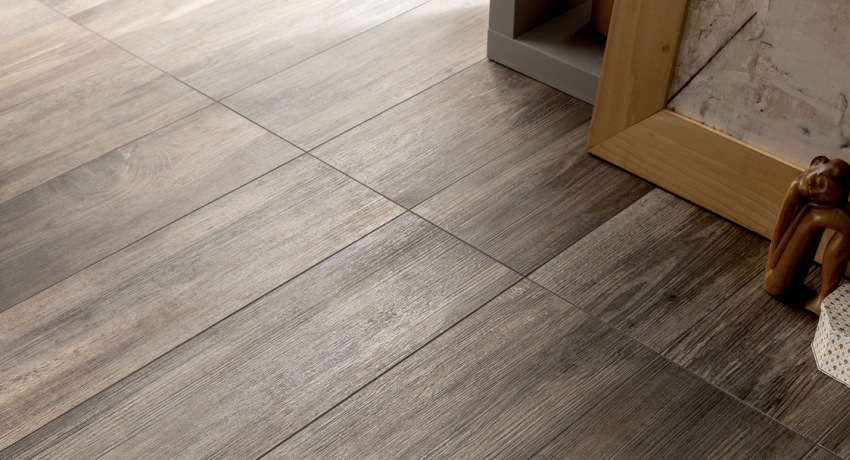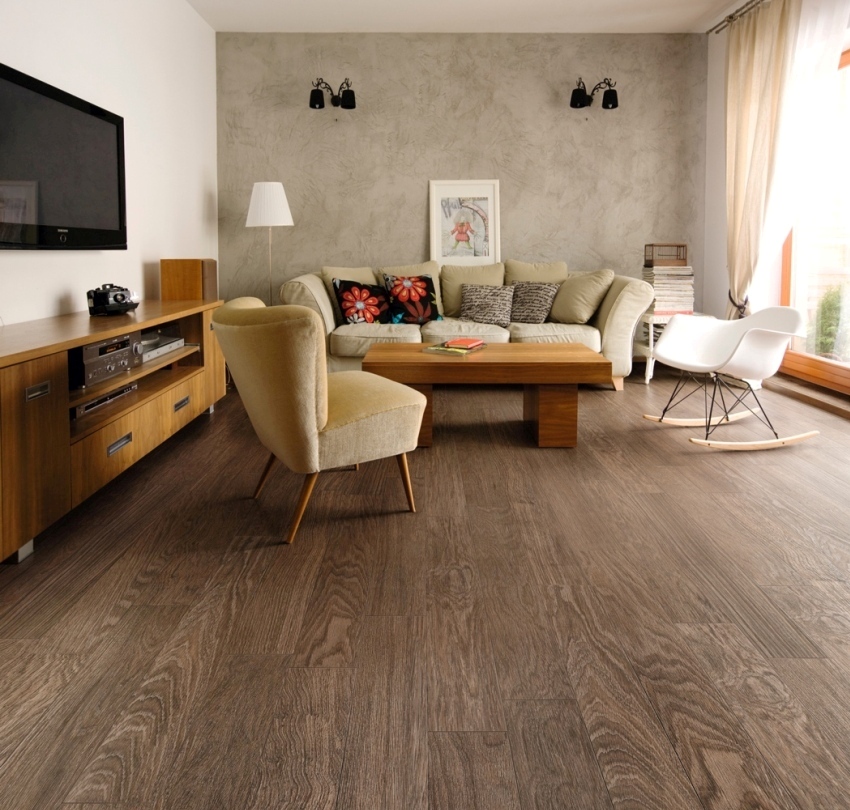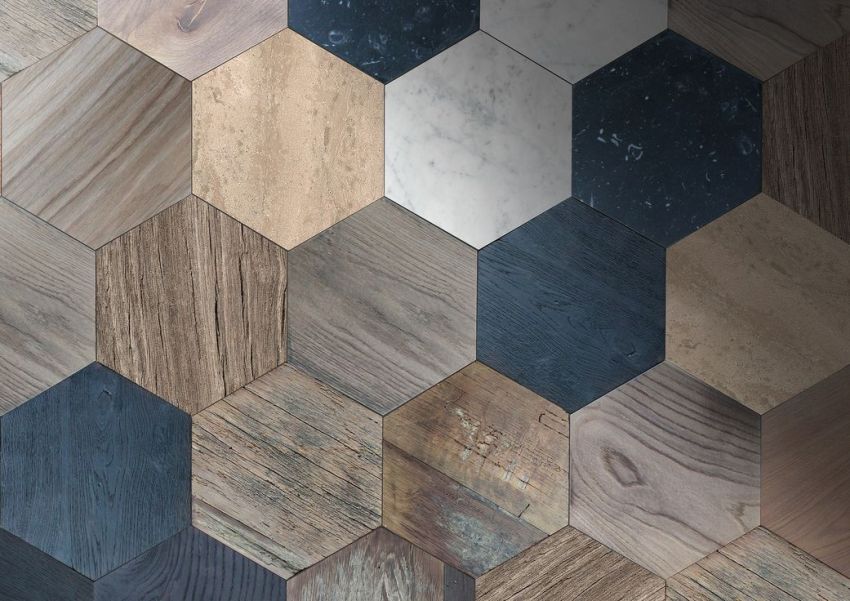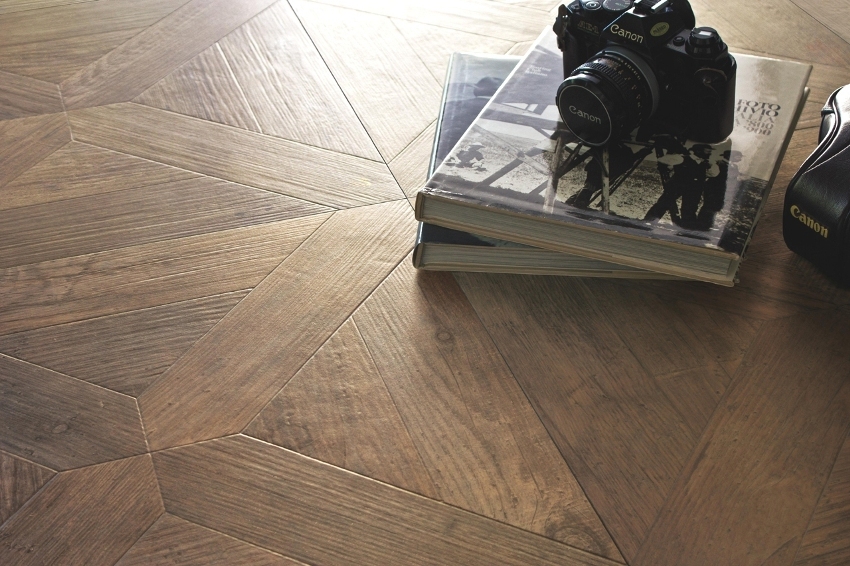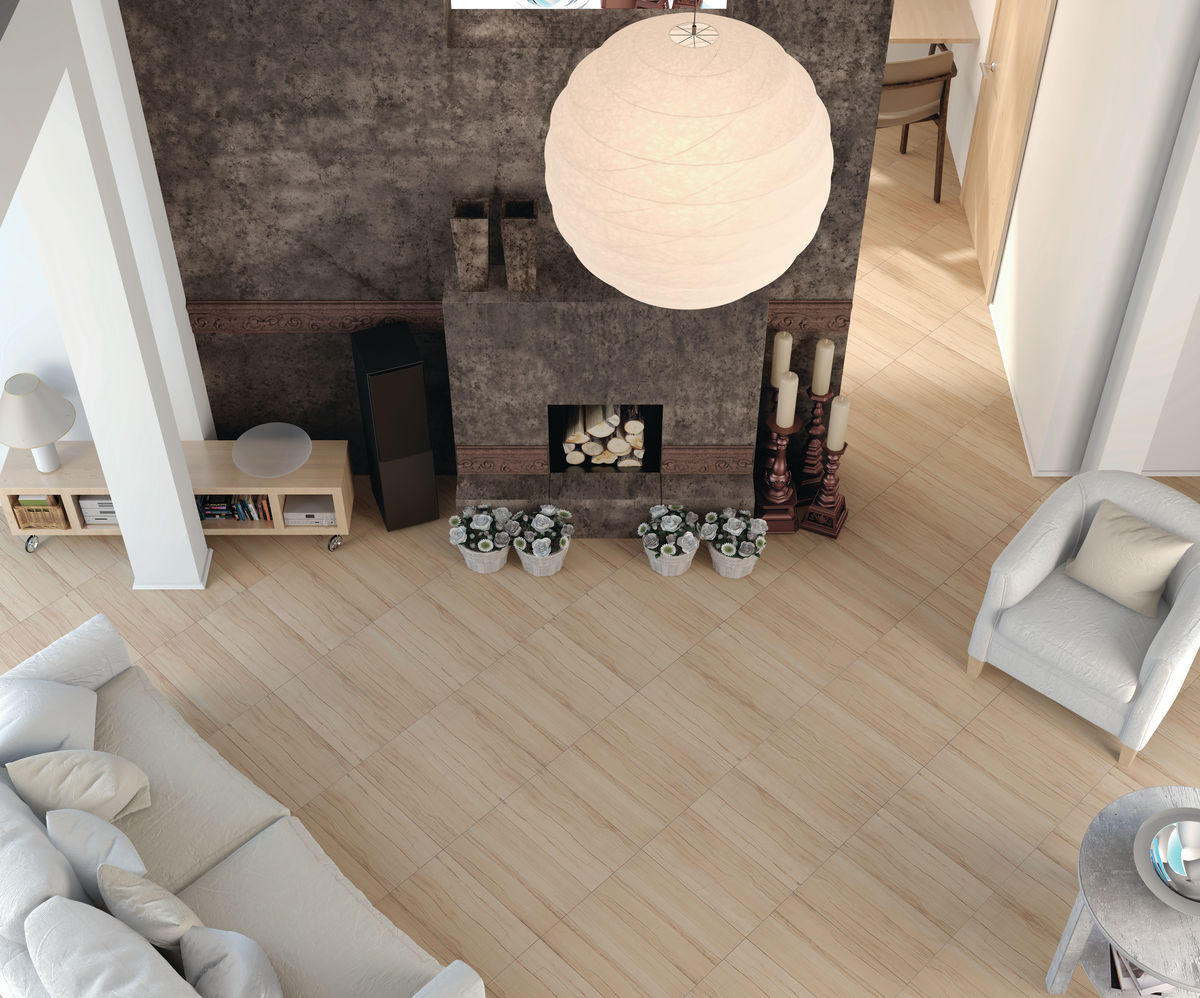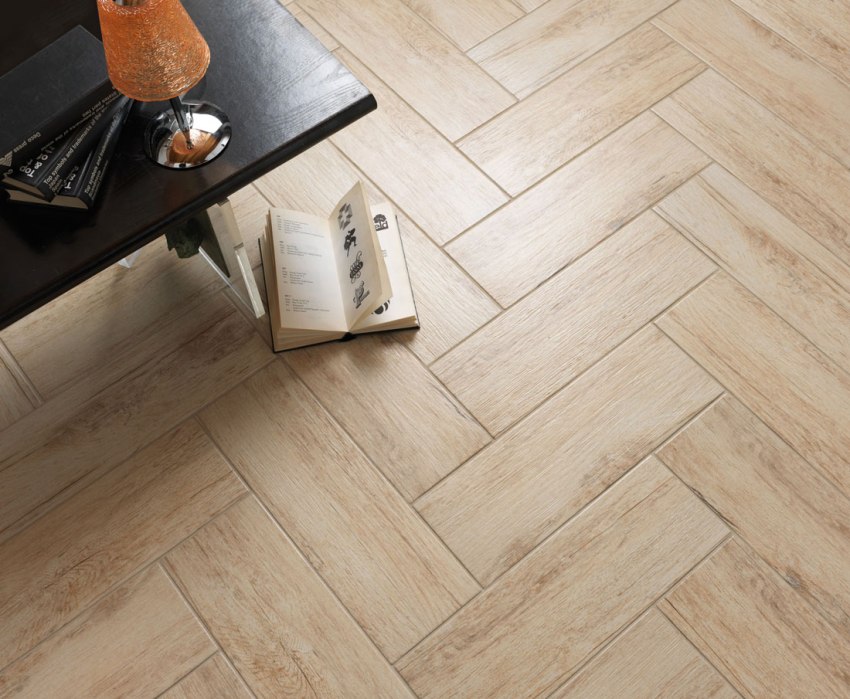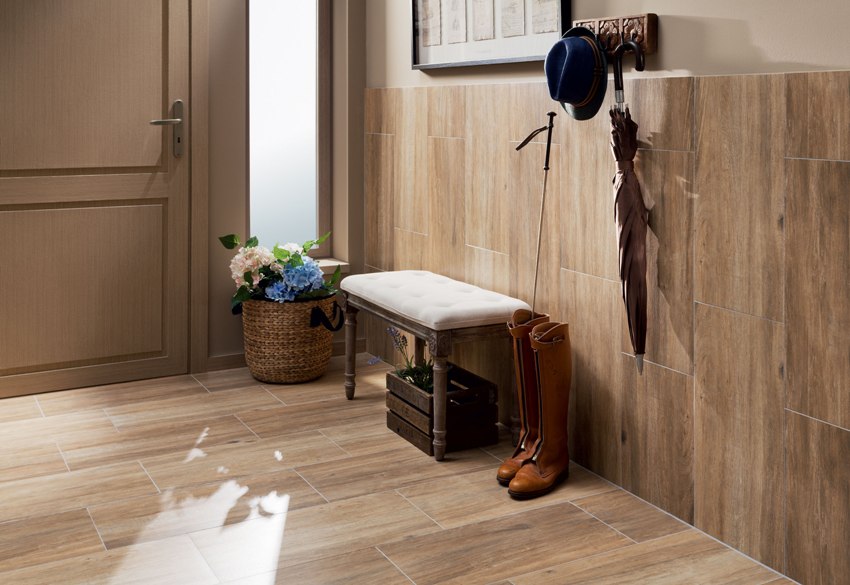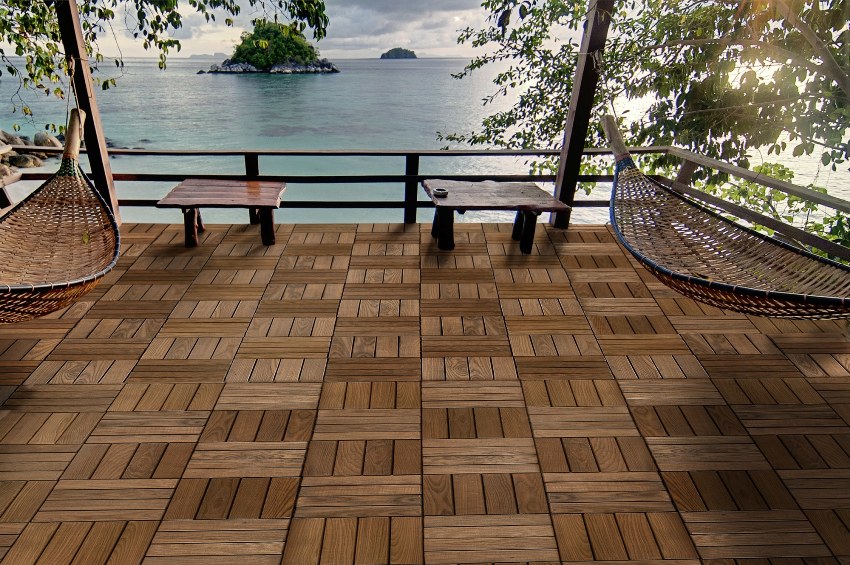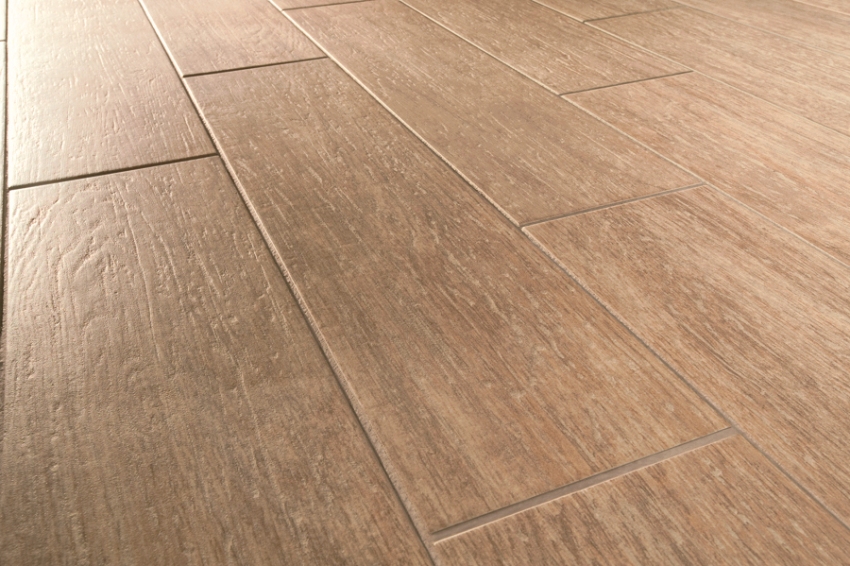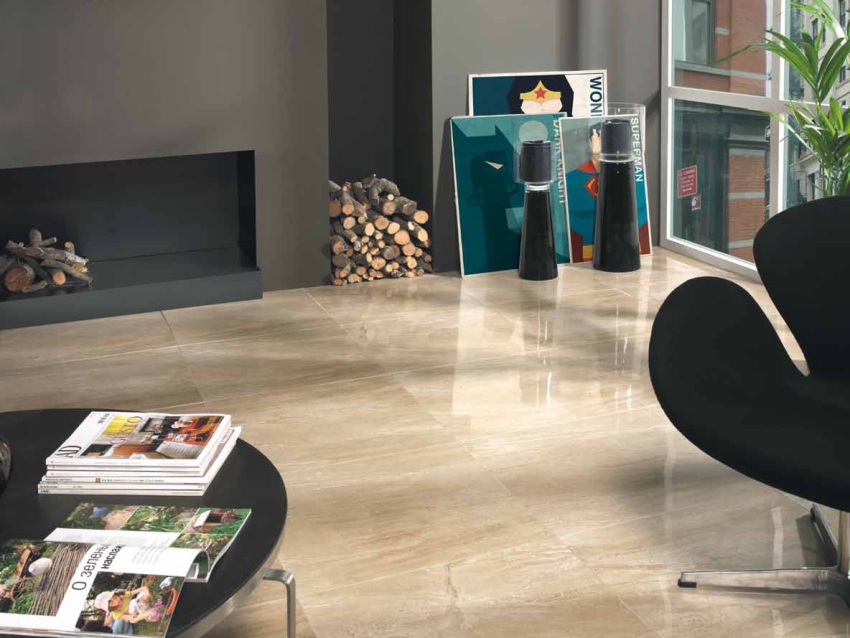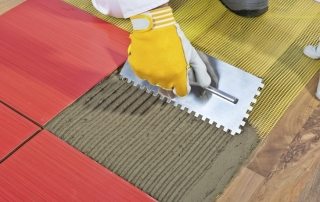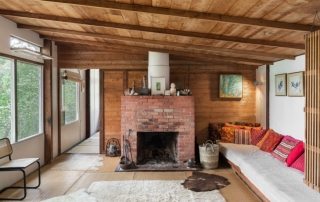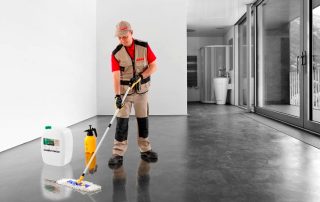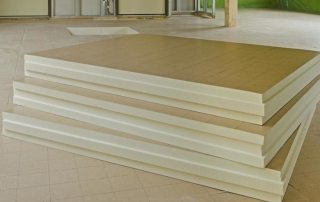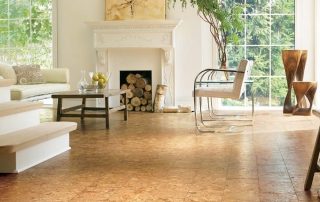Ceramoparket, or wood-like floor tiles, is the ideal solution when you need to save on material, but you do not want to lose in the design of the room. The material has undeniable advantages over natural wood. Thanks to the unique manufacturing technology, it turns out to create a natural imitation of a tree species with improved strength and performance.
Content
Distinctive advantages of wood-effect floor tiles
Woodgrain floor tiles have distinctive advantages that make this coating even superior to laminate, parquet or solid wood flooring. The main advantages of the material are:
- increased wear resistance;
- high strength;
- high level of thermal conductivity and heat resistance index make the material compatible with the underfloor heating system;
- has a high level of chemical inertness, which ensures resistance to coloring organic substances and fats;
- high resistance to wear and tear;
- resistance to temperature fluctuations inside the room;
- the increased level of frost resistance allows the use of tiles for finishing gazebos, verandas, garden paths;
- a high indicator of moisture resistance makes it possible to use a keramoparket for bathroom and kitchen;
- the material does not require special care;
- affordable cost of the product;
- attractive and aesthetic appearance that accurately simulates the color and texture of different types of wood;
- low cost of installation work.
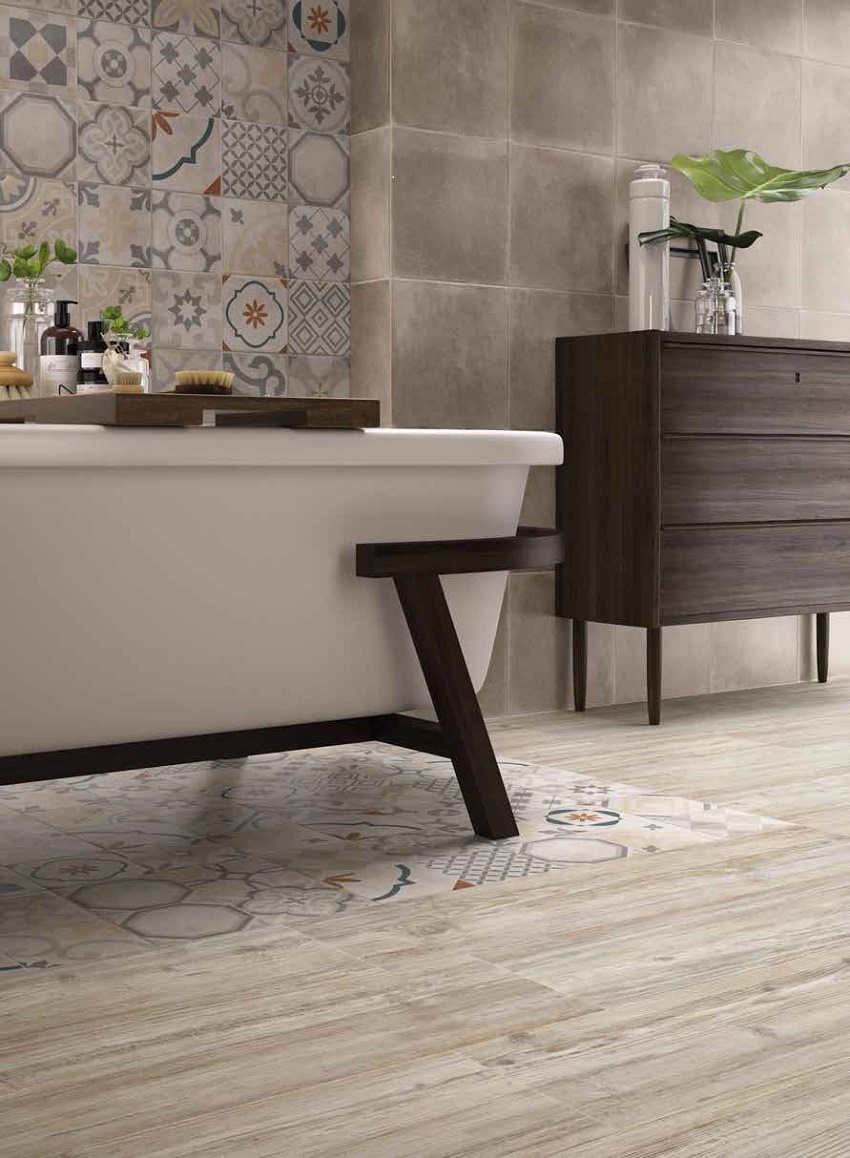
Bathroom tiles - material is available and easy to install
The main disadvantage of wood-like floor tiles is their cold surface, which creates discomfort. However, this problem can be solved by using a floor heating system.
Varieties and price of wood-effect floor tiles
Depending on the composition of the material and the manufacturing method, such types of wood-like floor tiles are distinguished: porcelain stoneware, polyvinyl chloride and ceramic.
Porcelain stoneware for wood-like floors slightly surpasses ceramic products in its technical and operational characteristics. For its manufacture, high-grade white kaolin clay, quartz sand, rare-earth metal oxides and coloring components are used. Front surface porcelain stoneware tiles can be matte, rough or polished, which imitates not only the texture and color of any type of wood, but also a radial or tangential cut.
The product has increased wear resistance, strength and frost resistance, which makes it possible to lay tiles on verandas, in open gazebos and on garden paths. Due to the fact that porcelain stoneware tiles can withstand significant loads and exposure to an aggressive environment, they can be used for flooring in garages and production workshops.
The shape and size of the tiles on the porcelain stoneware floor can be different, which allows you to create various geometric patterns. Today, tiles are produced in sizes 50x50, 150x150, 150x300, 200x200, 300x300, 300x450, 300x600, 400x400, 450x450, 600x600, 600x900, 1200x150, 1200x300, 1200x400 mm. The cost of domestically produced ceramic granite products averages 800-1200 rubles. per sq.m., and 2500-3500 rubles / m² from a foreign manufacturer.
Elastic PVC floor tiles are able to imitate laminate, parquet and solid board. It is an affordable and easy-to-install material that comes in a variety of patterns and colors of wood textures. The material consists of three layers: an upper protective layer, a middle layer of vinyl and a lower adhesive layer protected by a film, which is removed during installation. It is produced in the form of rectangular panels, like a laminate. PVC tiles can be square in size and imitate parquet.
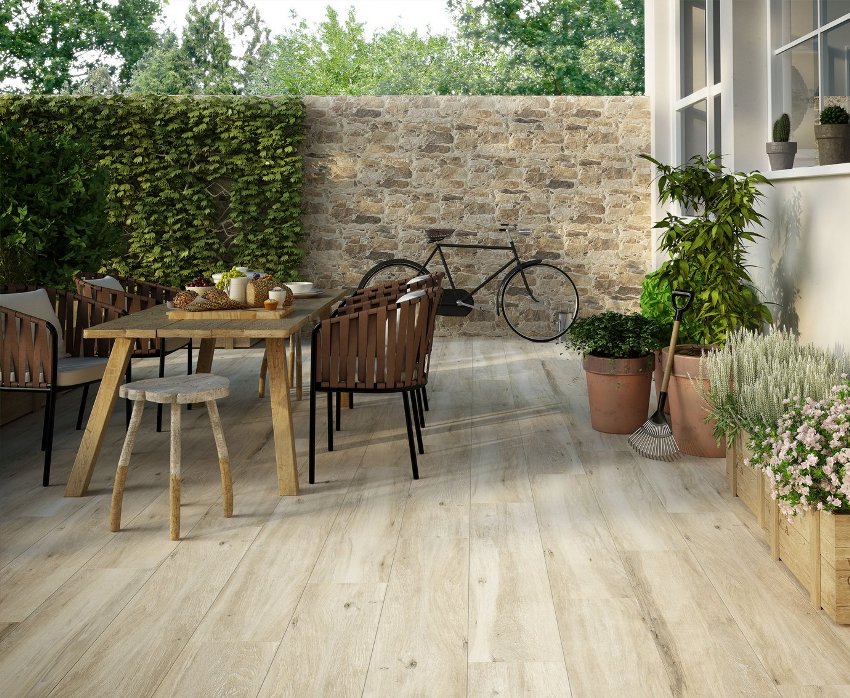
Due to their increased wear resistance and strength, the tile is often used as a covering on open terraces
Polyvinyl chloride floor tiles are moisture-resistant, wear-resistant and chemically resistant material that has good soundproofing properties and can be used when installing a floor heating system. The size of the product can be: 190.8x1300, 2408x1480, 493x493, 329x659, 393x393, 324x655, 500x500, 330x300, 610x610 mm. The average cost of the material is 800 rubles / m².
Ceramic tiles for laminate or parquet
Wood imitation ceramic tiles are a natural material that is produced by pressing and firing under certain conditions. Clay with the addition of quartz sand is used as a raw material, which reduces the percentage of shrinkage, slags, feldspars and nepheline to reduce the sintering temperature and thinners, which can improve the structure of the product.
Ceramic tiles on the floor, photos clearly show this, can be glazed and unglazed. The product is produced in a wide range of colors and rich design. These can be light wood colors, aged woods or exotic wood options. Ceramic tiles with a wood grain pattern quite naturally imitate the natural texture of wood, its natural grain and color.
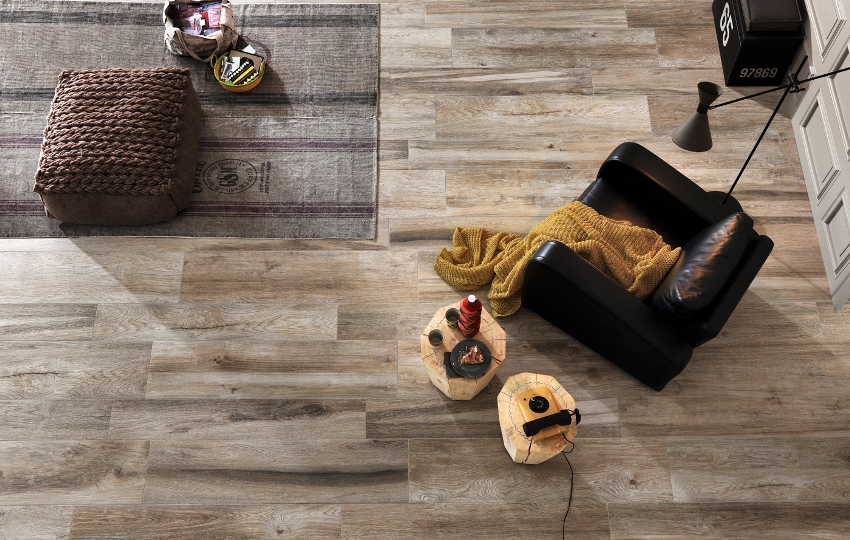
Floor tiles are well compatible with the underfloor heating system, due to their thermal conductivity and thermal stability
Wood-effect ceramic tiles are a durable, waterproof, durable and easy-care material that is suitable for decorating any premises where it is able to create a natural interior. The material is used primarily for flooring. However, there are many design solutions that involve laying wood-like ceramic tiles on the wall. This is especially true for rooms with high humidity, such as bathrooms, stylized as a sauna or bath.
The shape and size of the floor tiles can be different, which resembles natural parquet or board products, with which you can create any pattern that will resemble the true structure of wood. Ceramic tiles are produced in the following dimensions: 593x593, 610x610, 302x302, 35x302, 193x120, 93x93, 225x900, 450x900, 2125x85, 150x1200, 150x900, 160x675, 50x1000, 502x54, 200x800, 200x400, 200x200 and 150x600 mm.
The cost of domestic tiles is on average 700-950 rubles / m². While the price of a product from a foreign manufacturer starts at 1100 rubles / m².
Wood-effect floor tiles: material characteristics
Wood-effect floor tiles have certain characteristics that should be considered when choosing a material.You should immediately pay attention to the markings that indicate the purpose of the tile: wall or floor. The product can be glazed, which reduces its wear resistance, or without a glass decorative layer.
Helpful advice! As a floor covering, it is better to purchase unglazed wood-like tiles, which are more resistant to mechanical abrasion and have a high level of slip.
The wear resistance class is assigned to the material after a certain experiment. A circle with an abrasive coating begins to rotate on the surface of the product until signs of abrasion appear on the material. The number of revolutions determines the class of wear resistance. PEI I class includes products that have withstood up to 150 revolutions, PEI II - 600, PEI III - 1500 and more.
Today, manufacturers are introducing new technologies that make it possible to obtain a material with a PEI IV wear resistance class, where no visible damage appears on the tile even after 12,000 revolutions.
The slip resistance class is characterized by the coefficient of friction, which indicates the suitability of the tile for a particular room. Products with an R9 index are intended for rooms where people change clothes and go without shoes. Tiles marked with R10 can be used for toilets, kitchens, public spaces, garages and warehouses. Ceramoparkets with R11-R13 are used for industrial premises where there is high humidity in the floor.
The next indicator is the class of chemical resistance, which is characterized by the level of resistance of the material to aggressive chemicals. Depending on the nature of the change in the external state of the product after exposure to an aggressive environment, tiles can belong to one of five levels:
- AA - there is no visible damage on the product;
- A - there is minor damage on the tile;
- B - medium changes are visible on the material;
- C - the tile has partially lost its former appearance;
- D - complete loss of its original appearance.
Helpful advice! For kitchen flooring, it is recommended to purchase tiles with chemical resistance class AA.
Recommendations for the use of wood-effect floor tiles
The material is very often found in kitchen design. Laminate tiles, photos clearly show this, ideally match with wooden furniture and decor elements. For this room, you should choose a PEI class III ceramopark of wear resistance in warm colors.
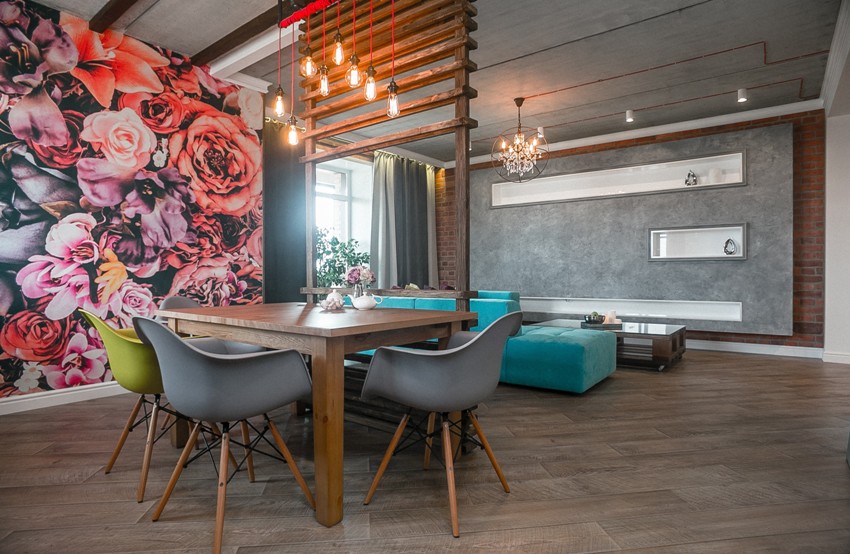
Diagonal laying tiles looks very impressive in the living room
Helpful advice! For small rooms, it is better to choose tiles of light colors with a fuzzy texture.
A good solution is to install wood-like tiles in the bathroom. The material has increased moisture resistance, which will create additional insulation for the room. Here, it is advisable to give preference to products of the wear resistance class PEI II, which have a relief, rough texture with a matte shade, which also reduces the risk of slipping.
Related article:
How to put tiles on a wooden floor: the subtleties of technology and recommendations
Stages of preparation and laying of tiles. Complexities and features of the process. Foundation and screed creation. Insulation and waterproofing of the coating.
The material can be used not only as a floor covering, but also apply wood-like wall tiles. This will give the room an elite decorative effect.
Helpful advice! For the bathroom, discreet warm shades such as pear, maple, ash and light oak are suitable.
Wood-like floor tiles are often used in hallways and living rooms. Ceramic tiles for parquetry in dark and juicy tones, such as cherry, wenge, pink maple, are very popular, which add sophistication and nobility to the room.For office, industrial and public premises, it is better to opt for wood-effect porcelain stoneware tiles with PEI IV and PEI V wear resistance class, which is a more durable material that can withstand significant loads.
How to lay floor tiles correctly?
To install wood imitation floor tiles, you must first prepare a perfectly flat base, since even slight differences in height will give the floor an unnatural look. For this, it is better to use self-leveling mixtures. Before laying the tiles, the surface must be clean, dry and free from grease.
Helpful advice! To create good adhesion between the base and the material, the surface must be primed before installing the tiles.
To lay the tiles, you will need a disc sander, even and notched staples, a level, a metal square, a rubber trowel for grouting. Next, the floor is marked according to the selected tile laying option. As an adhesive, you can use one-component or two-component compositions of the middle price category. The dry mixture is diluted in small portions, according to the instructions on the package.
Glue with a notched trowel, it is applied to the entire back of the tile and to the base. Tile installation should be started from one of the walls. First, rows of solid products are laid, then the remaining space is filled, which requires cutting the tiles. The evenness of the masonry of each product should be controlled by the level. The seams should be made as carefully as possible and not be conspicuous. It will be possible to correct small flaws with grout.
Options for laying wood tiles on the floor
Due to the variety of sizes, shades and textures of the product, wood-like tiles can be laid in one of several ways, which will create a unique ornament on the floor surface.
The most popular and easiest way is the deck type of tile laying. The material is laid with an offset of the rows from the length of the tile by 1/5 or 1/6 part. The tiles can be placed evenly and diagonally relative to the walls of the room. This is how the floor tiles are often laid under the laminate.
Another equally popular option is the herringbone, which requires the use of floor tiles for parquet in two different colors. Despite the fact that the resulting drawing is quite simple, it deprives the interior of monotony.
On the basis of the classic "herringbone", you can create your own unique scheme that will favorably emphasize the individuality of the room.
Chess masonry also involves the use of tiles of two different shades with a unique texture, with the help of which a semblance of a checkerboard is created. Each cell can be created from one or more tiles, different in color and structure. You can also make edging using narrow elements.
Helpful advice! Using this method of laying, you can visually lengthen or expand the room.
Using a regular braid, you can create an imitation of natural wood veneer weaves on the floor surface. There are many options where products of different colors and lengths are used. Thanks to such masonry, you can visually increase the size of the room.
A very unusual and interesting option is the "Swedish" braid, where long and short elements of different widths are weaved, which imitate different tree species with distinctive shades.
Laying "four breeds" involves the interlacing of four types of slabs, differing in shade, texture and size.All elements must be in harmony with each other. This is one of the most time consuming ways to install floor tiles.
Versailles weaving uses two types of tiles with different textures, colors and sizes. The classic way is to interweave narrow stripes, behind which squares are visible. Such a spectacular intricacy can be performed in different interpretations, which will make the room royally luxurious.
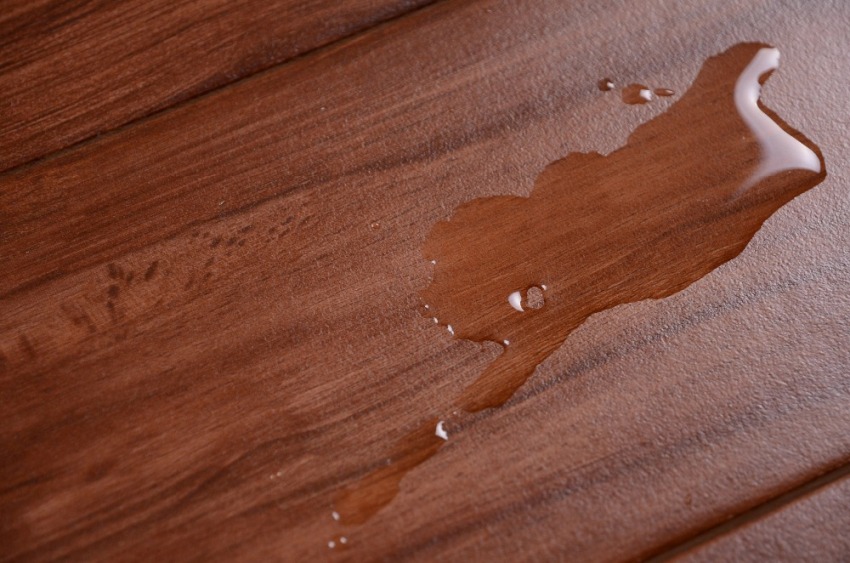
The moisture resistance of the tile allows it to be used in bathroom or in the kitchen.
Another spectacular, but difficult to implement is the "frame" installation method. It uses narrow strips of products in two colors of different lengths. This method involves making accurate material calculations and making markings for the location of the tiles.
To create a volumetric effect, the ideal option is the laying of floor tiles under a tree "well". In the middle of the common ornament is a dark square. Further, it is surrounded by tiles of lighter shades, which symbolize the walls of the well.
Woodgrain floor tiles are a good alternative to expensive and less practical wood. The material is more wear-resistant, tolerates moisture and an aggressive environment well, is unpretentious in maintenance, which prolongs its service life. A wide range of colors, a variety of textures and skillful laying of the material allow you to create a floor covering that is difficult to distinguish from natural wooden boards or natural parquet.
